Wednesday, September 26, 2007
SEE FORUMS (Chapter 18, Page 422)
Tourism and its effects (for example, pollution from hotels and the impact of boats and tourists on fragile habitats) often clash with conservation efforts. Sometimes, however, tourism can help. The economic impact of banning the hunting of harp seals in eastern Canada has been compensated for, in part, by the influx of tourists who now come to see the seals. Can you think of other examples? What recommendations can you make to minimize the impact of tourism on unspoiled marine environments?
An example that I believe will work is to EDUCATE! Educate by handing out brochures, in languages that the tourists use, explaining the effects on our marine environment while having their fun in our waters. Businesses have brochures readily available to promote their sales on water activities regardless of the damages it causes everyone. People like us who care together with Marine Biologists that are on island and Coastal Resources Management staff should come up with our own educational brochures to be made readily available to tourists.
The recommendation that I will make to minimize the impact of tourism on unspoiled marine environments is to INFORM! Inform tourists the importance of our marine organisms in our daily lives compared to their water sport activities for just a few hours of fun. Suggest to tourists that if being in our ocean to view the many different species of organisms is their passion, then perhaps they can contribute in many ways by becoming a Marine Biologist or by volunteering.
Tuesday, September 25, 2007
Algae Cell - 09/25/07
Eukaryote - an organism that consists of one or more eukaryotic cells.
Eukaryote Cell - a cell that contains a nucleus and other organelles.
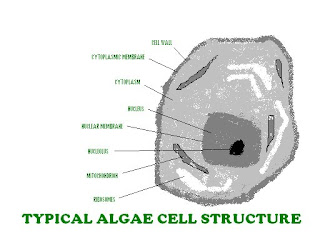 The parts of an algae from top to bottom and their function is as follows:
The parts of an algae from top to bottom and their function is as follows:
Cell Wall - protects the Cytoplasmic membrane.
Cytoplasmic Membrane - the very thin, highly flexible, but structurally weak membrane that lies under the wall and surrounds the interior of the cell.
Cytoplasm - the cell interior which consists of a solution of salts, sugars, amino acids, vitamins, and a wide variety of other soluble materials in water. Since the Cytoplasm has a higher solute concentration than the water surrounding the cell, osmosis causes water to pass from outside the cell through the relatively permeable cell wall, continue through the cytoplasmic membrane, and dilute the cytoplasm. This builds up pressure within the cell until it equalizes to the effective osmotic pressure and, if not for the rigidity of the cell wall, the cell would burst. Other chemical compounds necessary for the life of the cell are selectively passed through this membrane and waste products are evacuated through it.
Nucleus - contains most of the genetic material of the cell, and the DNA (deoxyribonucleic acid) molecules exist as linear strands. The DNA is condensed into obvious chromosomes only at the time of nuclear division (mitosis) in most algae; however, the nuclear DNA of the classes Dinophyceae and Euglenophyceae is always condensed.
Nuclear Membrane - has specialized nuclear pores that regulate the movement of molecules into and out of the nucleus.
Nucleolus - within the nucleus are found chromatin and a structure called the nucleolus. Chromatin is DNA in its active form. It consists of DNA looped around histone proteins. The nucleolus is a knot of chromatin. It is the nucleolus that manufactures ribosomes
Mitochondrion - is the site where food molecules are broken down and carbon dioxide, water, and chemical bond energy are released, a process called cellular respiration. Special organelles where respiration takes place. Mitochondria are the cell's power plants, breaking down organic molecules to provide energy.
Ribosomes - serves as the “workbench” during protein synthesis. It provides the site where genetic information, as messenger RNA, is translated into proteins. The ribosome carefully interprets the genetic code of the DNA so that the protein is made exactly to the genetic specifications.
Function:
Chiefly aquatic, eucaryotic one-celled or multicellular plants without true stems, roots and leaves, that are typically autotrophic, photosynthetic, and contain chlorophyll. Algae are not typically found in groundwater. They also may be attached to structures, rocks or other submerged surfaces. They are food for fish and small aquatic animals. Excess algal growths can impart tastes and odors to potable water. Algae produce oxygen during sunlight hours and use oxygen during the night hours.
2 Examples of organisms with algae cell:
1. Ulva (Sea Lettuce) - green alga
2. Padina - brown alga
Questions:
1. Where does respiration take place in an algae cell?
2. What part of the algae cell manufactures ribosomes?
3. What does algae produce during sunlight hours?
Thursday, September 20, 2007
SEE FORUMS (Observing Your World)
One of the most touching cultural practice for me as a Chamorro that began since I was a young girl is what we do for our departed loved one. Because we strongly believe that prayers are very powerful, we pray for our dead so they can be allowed into Heaven and be by our Lord's side. Our belief is that if a spirit of a loved one lingers in Purgatory, through prayers from family members and friends, that spirit makes its way into heaven. It is customary for us Chamorro's to pray the rosary for 18 straight days . The first 9 days of rosary is open to the public and the remaining 9 days are only for immediate family members. Through experience of having lost loved ones, I believe that as we gather together to pray the rosary, we not only help our beloved ones reach heaven but also help each other cope through the difficult times. This in itself explains why I am so touched by this cultural practice of ours.
Our cultural ways of understanding the world I would have to say is through "respect." Respect is strongly practiced in our culture. Respect for the land! Respect for the animals! Respect for the plants! Respect for the dead! Respect for the elders! Respect for the visitors! Respect for the people who do not believe in God! Basically, respect our entire surroundings because it is our way of life.
My way of doing science is through observations, documentations and experimentations.
One conflict that I have faced is our custom of having to provide food for everyone during the 19 days of rosary. Not only is this custom a burden for the surviving spouse, it really is not realistic.
Sunday, September 16, 2007
Paupau Beach - 9/15/07

It was unfortunate that I did not witness the amount of water that flows out of the huge pipes built on the shore of Paupau Beach. Although I did not see any action of water flow at the time, I could imagine just form the size of those pipes, that tons of water drains out from there and straight into our ocean. The water that has been flowing out of the pipes for many months now left a trail about 6 feet wide that leads down the beach. I followed the trail down and found branches as well as coconuts soaked and so old they had algae growing on them. Algae also grew on the rocks that were laying around on the trail.
Saturday, September 15, 2007
SEE FORUMS (Chapter 14, Page 323)
Pictures of Atoll in the Hawaiian Islands and Atoll in the Pacific Ocean

SEE FORUMS (Chapter 7, Page 152)
A new class of echinoderms, the sea daisies or concentricycloids, was discovered in 1986. They are deep-water animals living on sunken wood. They are flat and round, looking very much like a small sea star without arms. They also lack a gut. Without ever having seen them, why do you think they were classified as echinoderms, not as members of a new phylum? Any hypotheses as to how they feed or move around?
I think the sea daisies were classified as echinoderms and not as members of a new phylum simply because they look very much like a small sea star without arms. Having this similarity definitely would mean that they are related somehow.
Hypotheses: Sea daisies feed and move around using the central part of their body.
STUDENT NOTES ONLY:
Echinoderms - Invertebrates (no back bone) with five-way radial symmetry (the regular arrangement of similar body parts around a central axis) and a water vascular system (a network of water-filled canals in echinoderms used on locomotion and food-gathering). Examples are sea cucumbers, starfishes, sea urchins, etc.
Phylum - The taxon (a group of organisms that share a common ancestry) that represents a main division of a kingdom
Hypotheses - A statement that might be true.
CITE: Picture obtained from http://images.google.com/images?gbv=2&svnum=10&hl=en&q
Monday, September 10, 2007
The Shape of Life - 09/08/07
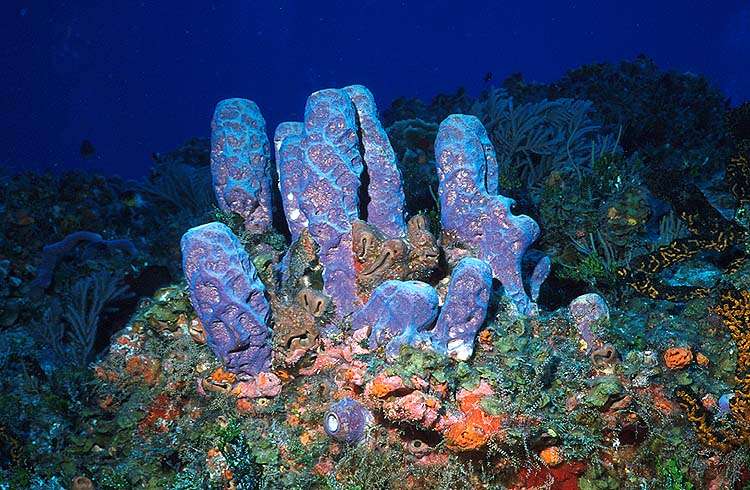

1. What organism is thought to be the first multi-cellular animal? Ancient Sponge
2. How is it the same (3 ex) and diff (3 ex) from animals today?
Animals Today
- move
- feed themselves
- reproduce and care for their young
- engage in fear territorial boundaries
Sponges
- mysterious (have lots of secrets)
- no definite shape
- 9,000 different species
- live both in cold and warm places
- vibrant animal
- cells are unique in the animal kingdom
- cells have a unique way of working together
- does not have a heart, nervous system or blood
- perform many responsibilities
- continuously re-invent themselves
- no other plant or animal can resurrect themselves the way sponges do
3. How do scientists know it’s an animal? Through a process - Gene Sequencing
4. What evidence do scientists have to prove that other animals (multi-cellular) evolved from this organism? Through DNA testing which proved that all animals evolved from the same blue print
5. What more do you want to know? How many different species of sponges live in our ocean, the Pacific Ocean?
Mount Laulau - 09/08/07
It is a beautiful thing knowing that there are people out there aside from our local people that show a great deal of love and caring for our islands. Thank you Angelo and Bree. Your dedication and devotion are vary much appreciated. I am very interested in doing volunteer work to beautify CNMI. I will be checking your blogs for scheduled dates and you will definitely see me around. I will also bring family and friends to lend a helping hand.
Angelo explained that the local ways of clearing land is by burning the trees which is not good. He went on and explained that when the trees are burned, not only does it spread further but the fire also burns the soil. When soil is burned, it becomes very dry so when it rains or we have a typhoon, there is a runoff of burned soil from Mount Laulau into our ocean.
Angelo also explained that farmers near the hill uses fertilizers and pesticides and these also gets washed down into our ocean by rain or typhoon. In addition to farmers is the golf course in which they use chemicals for the growth of their grass and although a beautiful sight to see, the chemicals are deadly for our marine animals.
Because Laulau is one of the best diving spots for tourists, it is important to keep Laulau beach clean so marine life will be present for many years to come. An estimate of divers per day at Laulau is 100 with a diving cost of between $75 to $100 making about $1,000 daily.
Saturday, September 8, 2007
San Antonio Beach - 08/25/07
Below are pictures and information on the marine animals that were caught and also some of my observations of the San Antonio Beach.
CHECK IT OUT!
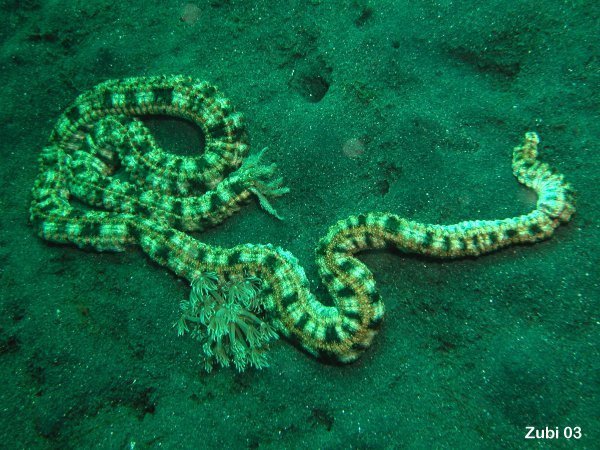
2. Synapta maculata (Synaptidae), 140 cm [Holothurians - Family Synaptidae, etc.]
Charmaine, Justo and myself found one just like this one but it was returned back into the ocean because someone had already collected one.

4. Frog shell, Bursa rubeta (Bursidae) [Murex Shells, etc.]
5. Shrimp
6. Fishes
7. Black Boxfish or Puffer (I thought this fish was really cute)
8. Black Sea Cucumber
My observation of San Antonio Beach:
- Lots of Sea Weeds
- Lots of algae
- Lots of Black Sea Cucumbers
- Many different types of small fish
- fish travel in small groups apart from each group

- parrot fish (Bullethead parrotfish, Scarus sordidus, 30 cm - Parrotfishes - Family Scaridae)
 - striped fish (Striped surgeon fish, Acanthurus lineatus, 35 cm - Surgeonfishes - Family Acanthuridae)
- striped fish (Striped surgeon fish, Acanthurus lineatus, 35 cm - Surgeonfishes - Family Acanthuridae) - butterfly fish (Moorish idol Zanclus cornutus, (Zanclidae) 22 cm - Surgeonfishes - Family Acanthuridae, etc.
- butterfly fish (Moorish idol Zanclus cornutus, (Zanclidae) 22 cm - Surgeonfishes - Family Acanthuridae, etc.- Lots of small holes in the sand that the fish use to hide (home)
- Fish hides underneath rocks as well as in between (home)
- Fish are mostly present where the wreckage remain at the very bottom (home)
CITE: pictures obtained from http://images.google.com/images?gbv=2&svnum=10&hl=en&q
Tuesday, September 4, 2007
Obyan Beach - 09/03/07
ENJOY THE VIEW!
1. Parrot Fish – Bleeker’s parrotfish, Scarus bleekeri, 35 cm (W. Pacific) [page 327 – Field Guide]

2. Tataga – Bluespine unicornfish, Naso unicornis, 40 cm [page 337 – Field Guide]
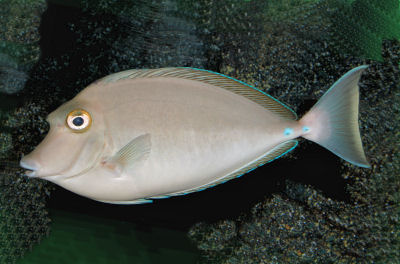
3. Hangun – Orangespine unicornfish, Naso lituratus, 35 cm [page 337 – Field Guide]
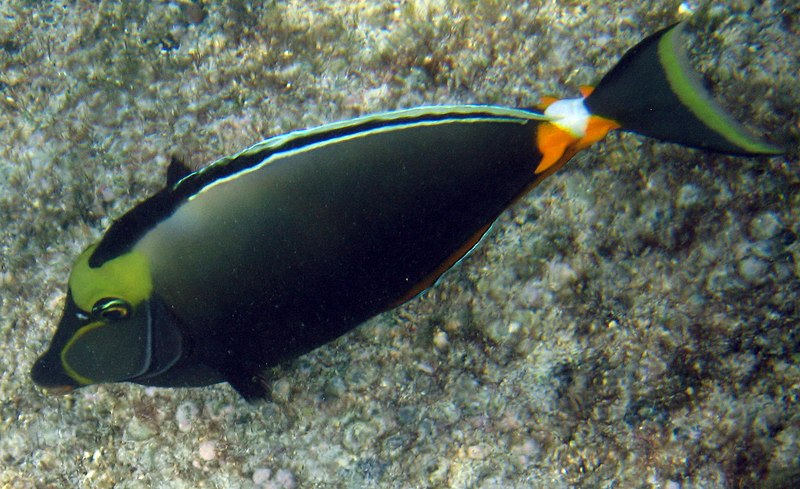
4. Striped Fish W/Sharp Blade Near Tail – Sohal surgeonfish, Acanthurus sohal, 30 cm (Red Sea) [page 337 – Field Guide]
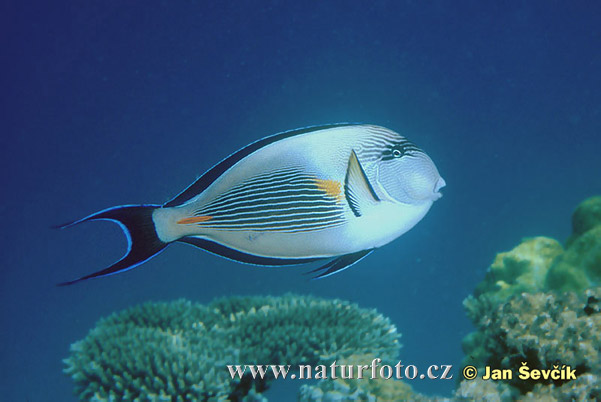
5. Tiny Gray Fish W/Black Vertical Stripes – Convict surgeonfish, Acanthurus triostegus, 25 cm [page 337 – Field Guide]

6. Butterfly Fish – Moorish idol, Zanclus cornutus, (Zanclidae) 22 cm [page 339 – Field Guide]
(SAME PICTURE AS THE SAN ANTONIO BEACH PUBLISHED POST)
7. Pipefish – Banded pipefish, Corythoichthys intestinalis, 10 cm [page 267 – Field Guide]
(SAME PICTURE AS THE SAN ANTONIO BEACH PUBLISHED POST)
8. Gadao – Dwarf-spotted grouper, Epinephelus merra, 18 cm [page 275 – Field Guide] 
9. Baby Yellow/Black Striped Fish – Gold-lined sea bream, Gnathodentex aurolineatus, 25 cm [page 288 – Field Guide] 
10. I’I or E’E/Tarakitu – Thicklip trevally, Carangoides orthogrammus, 40 cm [page 283 – Field Guide]
Below is a sea cucumber that Charmaine, Marge and Justo collected at Obyan Beach. While working on my assignment on sea daisies, I stumbled into this picture and amazingly it looks exactly as disgusting as the sea cucumber that the three caught. Disgusting but very interesting! Sea cucumber - The Sea cucumber, like the Brittle Star, belongs to a group of animals called the Echinoderms. Most are scavengers - some sift through the bottom sediments (like sand or mud); others trap their food by waving tentacles around their mouth in the water. Many types of sea cucumber will "throw up" many of their internal organs when attacked. These organs can regrow if they survive the attack.
Sea cucumber - The Sea cucumber, like the Brittle Star, belongs to a group of animals called the Echinoderms. Most are scavengers - some sift through the bottom sediments (like sand or mud); others trap their food by waving tentacles around their mouth in the water. Many types of sea cucumber will "throw up" many of their internal organs when attacked. These organs can regrow if they survive the attack.
CITE: pictures obtained from http://images.google.com/images?gbv=2&svnum=10&hl=en&sa=x&oi=spell&resnum=o&ct=result&cd=l&q





